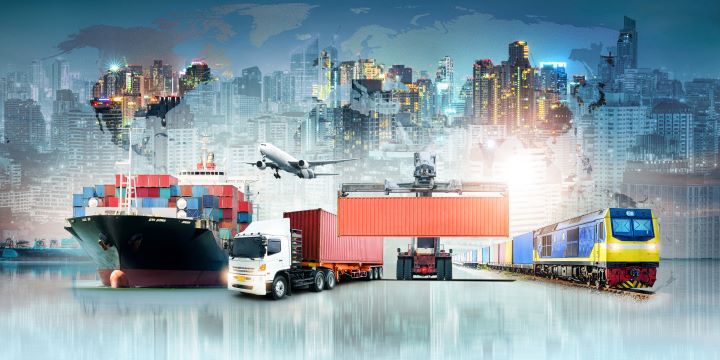Table of Contents
- Introduction to Less-Than-Truckload Freight
- How LTL Freight Shipping Works
- Cost Benefits of LTL Shipping
- LTL for Business: Balancing Cost and Timelines
- Environmental Impact of LTL Shipping
- Navigating the Challenges of LTL Shipping
- Technology and LTL Freight: A Synergistic Relationship
- The Future of LTL Freight Shipping
- LTL Shipping for Specialized Goods
- LTL Freight Best Practices
Key Takeaways
- Understanding LTL freight’s cost benefits and operational workings can enhance business logistics.
- Technological advancements are creating a more efficient LTL freight shipping landscape.
- Environmental considerations are increasingly crucial in choosing LTL freight as a shipping option.
Introduction to Less-Than-Truckload Freight
In the intricate tapestry of supply chain management, fine-tuning each thread determines the strength and efficiency of the overall picture. One such thread is Less-Than-Truckload (LTL) freight shipping, a mode of transportation that is increasingly being leveraged by businesses of all sizes for its scalability and flexibility. For those dealing with shipments that are too large for courier services but too small to justify using an entire trailer, LTL freight offers a compromise that balances cost without sacrificing the integrity of delivery schedules. By understanding the nuances of LTL freight, businesses can optimize their logistics practices and create a competitive edge in the marketplace.
This multi-faceted shipping option is particularly pertinent in today’s economic landscape, where maximizing efficiency and reducing costs are paramount. Companies looking to streamline their shipping processes while adhering to budgetary constraints find a solution in LTL due to its shared-space approach. This offers a cost-effective transport strategy and aligns with the growing demand for versatility in handling variable freight volumes. The inherent nature of LTL allows for adapting to business cycles, making it easier for companies to manage inventory without overcommitting resources.
How LTL Freight Shipping Works
To grasp the full functionality of LTL freight, it’s essential to understand its operational intricacies. The process initiates as shippers collect and transport various shipments to a central hub. At this hub, careful consolidation occurs, grouping items headed for similar destinations into loads suitable for shared freight transport. These combined shipments then progress to regional distribution centers, serving as intermediate stops. At these centers, goods may undergo further organization for the final portion of their journey, ensuring optimal delivery route efficiency for LTL freight.
The essence of LTL’s efficiency lies in its networked approach, employing a hub-and-spoke model akin to that used by airlines. Each shipment may disembark at different terminals, like a passenger connecting through various airports to reach their destination. This allows for a high degree of customization in routing, ultimately leading to significant cost savings and optimization of transit times. Understanding this logistical dance enables businesses to select an LTL service that aligns with their specific needs and expectations while maintaining a keen eye on fostering customer satisfaction through reliable and timely deliveries.
Cost Benefits of LTL Shipping
The most compelling reason businesses employ LTL freight is the potential for considerable financial savings. Unlike Full Truckload (FTL) shipping, where a single shipper bears the total cost of a trailer, LTL allows the distribution of the expenses amongst several companies. Each shipper pays only for the space their goods occupy, plus a portion of the overall transportation expenses related to labor, fuel, and tolls. This method provides an economical alternative for businesses that regularly need to ship smaller quantities of goods and who are looking to avoid the premium of hiring an entire truck.
LTL stands out for its unique capability to scale according to shipment size and frequency compared to other freight shipping forms. With flexible pricing models, LTL services are attractive for those looking to manage costs effectively while maintaining high service standards. Carefully tailored LTL solutions can accommodate the ebb and flow of shipping requirements, which, in turn, helps to avoid unnecessary expenditure on freight services during quieter periods. This financial adaptability makes LTL shipping a strategic choice for businesses with variable shipping volumes.
LTL for Business: Balancing Cost and Timelines
Navigating the trade-off between cost and speed is an everyday challenge in the logistics sector. LTL shipping strikes a favorable balance by offering a budget-conscious alternative to expedited freight services. Although it is not designed to compete with the delivery speed of direct FTL shipments or courier services, LTL can offer time-sensitive solutions that align with broader business objectives and logistics budgets.
This balancing act is vital for businesses aiming to meet tight deadlines without incurring the steep costs of premium delivery services. LTL carriers are well-equipped to handle time-definite deliveries, offering scheduled pick-up and delivery services that integrate seamlessly into the complex tapestry of supply chain management. With proper planning and carrier selection, businesses can ensure that their goods move through the LTL network efficiently and arrive within the desired time frame, providing customers with reliable delivery at a fraction of the cost.
Environmental Impact of LTL Shipping
As concerns over climate change intensify, the freight industry is not immune to the scrutiny of its environmental footprint. Thankfully, LTL freight represents a more sustainable option when compared to other freight modes. Consolidating shipments leads to fewer road vehicles, reducing fuel consumption and greenhouse gas emissions. Additionally, efficient route planning and utilizing newer, more fuel-efficient trucks help LTL carriers minimize their environmental impact. LTL shipping is a breath of fresh air in an industry often heavily reliant on fossil fuels.
The movement towards sustainable logistics is not just a regulatory or environmental concern but is swiftly becoming a competitive differentiator and a driver of customer loyalty. Aware of the shifting market dynamics, LTL carriers continuously explore ways to refine their operations in favor of eco-friendly practices. Businesses that partner with carriers prioritizing sustainability are making an environmentally conscious choice and positioning themselves as leaders in the movement towards greener supply chains. LTL Carriers Focus on Densification and Sustainability to Combat Climate Change, bolstering their brand image and resonating with consumers who value corporate responsibility.
Navigating the Challenges of LTL Shipping
Though laced with advantages, LTL shipping has inherent challenges. The complexities of coordinating and consolidating shipments from various shippers can introduce variables that require proactive management. Delays can occur if one part of the cargo is not ready, and the nature of LTL networks can sometimes result in longer transit times than direct FTL shipping.
In addition, the handling process at consolidation hubs and transfer terminals introduces the potential for damage if proper care is not taken. As such, shippers must prepare their freight meticulously for the rigors of the journey. Clear labeling, robust packaging, and detailed documentation are essential for ensuring LTL shipments’ safe and accurate delivery. Shippers should also develop a strong relationship with their chosen LTL carrier to facilitate effective communication and contingency planning, ensuring any hurdles can be navigated with minimal disruption to the supply chain.
Technology and LTL Freight: A Synergistic Relationship
Leveraging technology is not a new phenomenon in logistics, but its role in refining LTL freight shipping operations has been revolutionary. From sophisticated Transportation Management Systems (TMS) to the adoption of Internet of Things (IoT) devices, technological integration is streamlining the shipping, tracking, and delivery process. In an increasingly data-driven industry, LTL carriers who fail to invest in technology risk falling behind as these advancements set new standards in efficiency and customer service.
The integration of GPS tracking, electronic logging devices (ELDs), and automated sorting systems are just a few examples of the technological tools reshaping the LTL landscape. These advancements improve the precision and transparency of the shipping process, empowering shippers and customers with real-time visibility into the status of their goods. By embracing such innovations, LTL carriers are not only enhancing their operational capabilities but are also providing their clients with a layer of reassurance and accountability that was previously unattainable. The industry as a whole is evolving, and the influence of technology is evident in the efficiency gains and enhanced customer experiences. LTL Carriers Turn to Technology Tools to move more freight with less capacity and to navigate the ever-growing demands of the logistics world.
The Future of LTL Freight Shipping
Looking ahead, the LTL freight sector remains one of the most dynamic components of the logistics industry. With burgeoning trends like e-commerce acceleration and an increased focus on last-mile delivery, the need for reliable and efficient LTL shipping options has never been greater. As consumer expectations continue escalating, prompting a demand for faster, more transparent shipping solutions, LTL carriers are responding by expanding services and enhancing network connectivity.
Emerging technologies, such as autonomous vehicles, loom on the horizon, hinting at a future where the efficiency of LTL operations could be amplified even further. Combined with ongoing supply chain optimization and data analytics developments, these advancements promise to refine the customer experience and fortify the LTL freight sector’s role as a critical asset in modern logistics.
LTL Shipping for Specialized Goods
Specialized goods encompass a variety of freight that demands unique handling requirements, whether due to fragility, perishability, or hazardous properties. LTL shipping can fully accommodate such needs, provided shippers and carriers communicate efficiently and adhere to the established protocols. Ensuring proper packaging, maintaining the necessary environmental conditions throughout transit, and complying with regulations are all part of the equation.
With specialized goods, the stakes are invariably higher. Errors can lead to spoilage, breakage, or more severe consequences. Therefore, it is incumbent upon both shippers and carriers to work in tandem, taking every precaution to safeguard the integrity of these shipments. Carriers that offer dedicated services for specialized goods often employ specially trained personnel and equipment to manage these types of shipments effectively, thereby ensuring the delivery of these products in pristine condition.
LTL Freight Best Practices
The intricate world of LTL freight shipping can appear daunting, but adhering to best practices can ensure a smooth and successful shipping experience. One foundational element is proper packaging, which protects goods during transit and handling stages. Using high-grade materials and securing loads on pallets reduce the risk of damage, making for a more secure journey.
Accurate and detailed documentation serves as the roadmap for LTL shipments. It facilitates customs clearance, helps carriers classify freight correctly, and ensures that all parties are fully informed. Another critical practice is open lines of communication with carriers, which aids in managing expectations and addressing any issues that arise swiftly. Ultimately, businesses that invest the time in understanding and implementing these best practices can expect a more reliable shipping process, minimizing the potential for costly errors and delays and fostering a robust logistical network.







